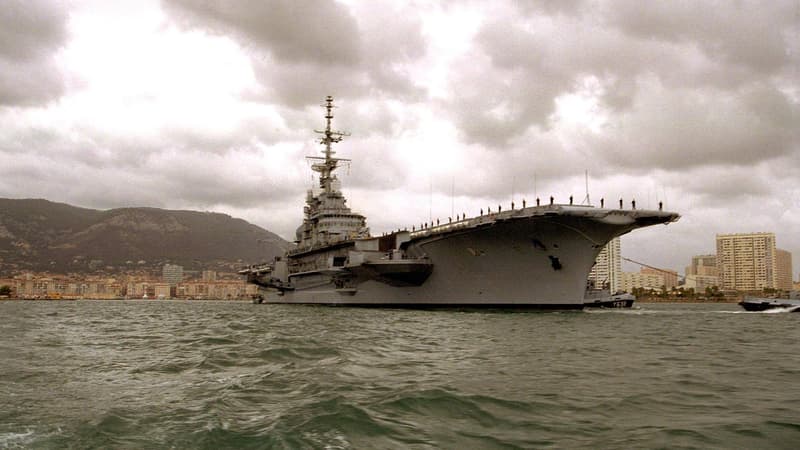An aircraft carrier almost 5000 meters deep. The Brazilian Navy announced on Friday that it had sunk the former aircraft carrier Foch in the Atlantic Ocean containing various toxic waste, including asbestos and paint. This decision has been widely criticized by environmental associations that denounce an “environmental crime”.
9.6 tons of asbestos, more than 600 tons of inks
The Brazilian Federal Public Ministry itself expressed its concern about this decision, denouncing the presence of “9.6 tons of asbestos, a potentially toxic and carcinogenic substance, as well as 644 tons of inks and other dangerous materials” on the boat.
There is a “risk of serious environmental damage (…) in particular because the hull is damaged,” the prosecutor argued.
Despite the ministry’s appeals to the courts, the ship commissioned in 1963 was sunk some 350 km off the Brazilian coast, in an area “approximately 5,000 meters deep,” according to the Brazilian authorities. She had been sold by France to Brazil in 2000.
“Incalculable” damage for NGOs
Something to worry about environmental protection associations. “The first disaster is that there will be immediate mortality in these communities of molluscs, crustaceans, fish that will later be caught by the Brazilians,” denounced Jacky Bonnemains, president of the Robin Hood environmental defense association, on BFMTV.
“One day or another this disaster will be noticeable on the plate of consumers,” he worries.
The environmental NGOs Greenpeace, Sea Shepherd and Basel Action Network believe that this sinking will cause “incalculable” damage and denounce a “violation of three international treaties” on the environment, in a joint press release.
“The only solution” according to the Brazilian Navy
Without denying the environmental damage, the Brazilian Navy justified this decision by assuring that it had no other alternative. For her, the aircraft carrier of more than 60 years could not make its return near the coast due to the “high risk” it posed to the environment.
“Given the risks involved in towing and due to the deterioration of the hull (…), the only solution is to abandon the hull by sinking it in a controlled manner,” the Navy explained in a joint statement on Wednesday. with the Brazilian Ministry of Defense.
The judge of the federal court of the state of Pernambuco (northeast of the country) authorized the operation although he considered it a “tragic and unfortunate” solution, according to the G1 media.
a slow decay
The breakdown of the ship will now take place “little by little”, probably taking “centuries”, according to our Defense consultant, General Jérôme Pellistrandi.
Despite the presence of paint and asbestos, the 30,000-ton aircraft carrier was previously emptied of many hazardous substances. “It’s approximately 28,000 tons of steel, (and more) paint, a bit of asbestos because we put it in at the time, but most of it has been removed,” she says.
“When you have ships that sink transporting merchandise, they transport much more dangerous and polluting products than this aircraft carrier that was in a state of scrap,” he still assures.
This shipwreck is far from the first. In 2020, an ore ship, the Staller Banner, which ran aground with its cargo, was sunk off the coast of Brazil, by decision of Jair Bolsonaro, then president.
Source: BFM TV


